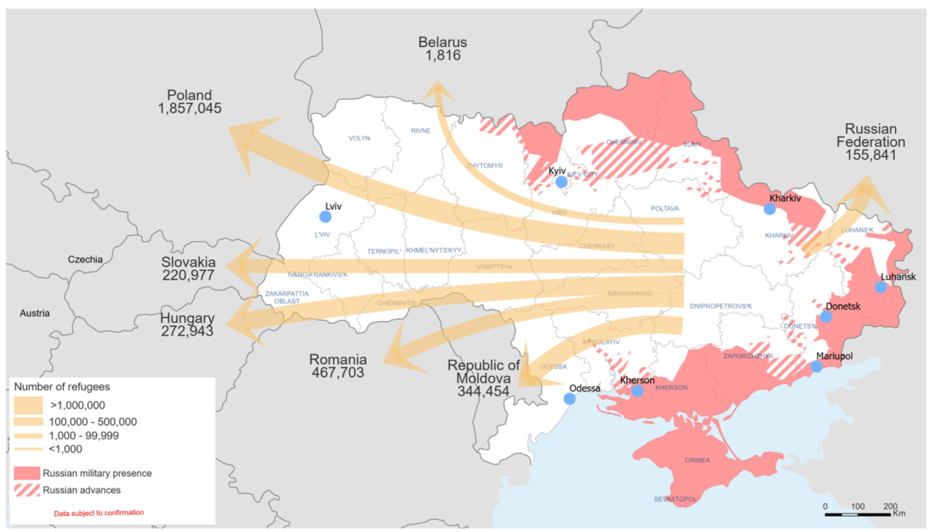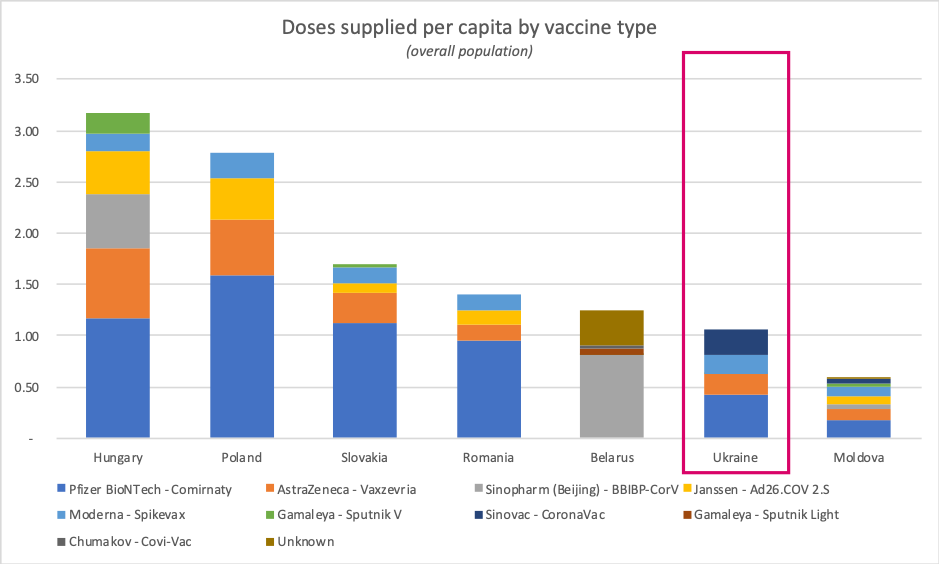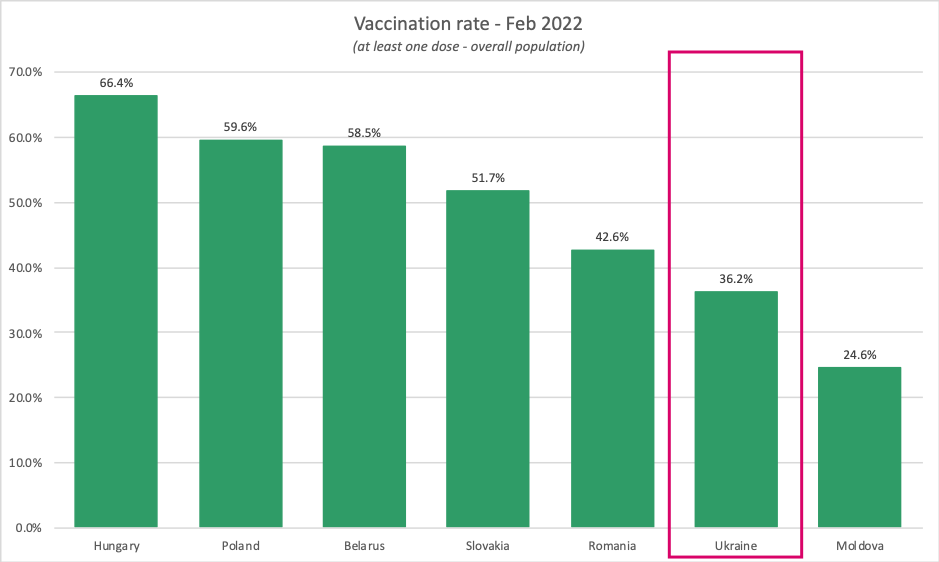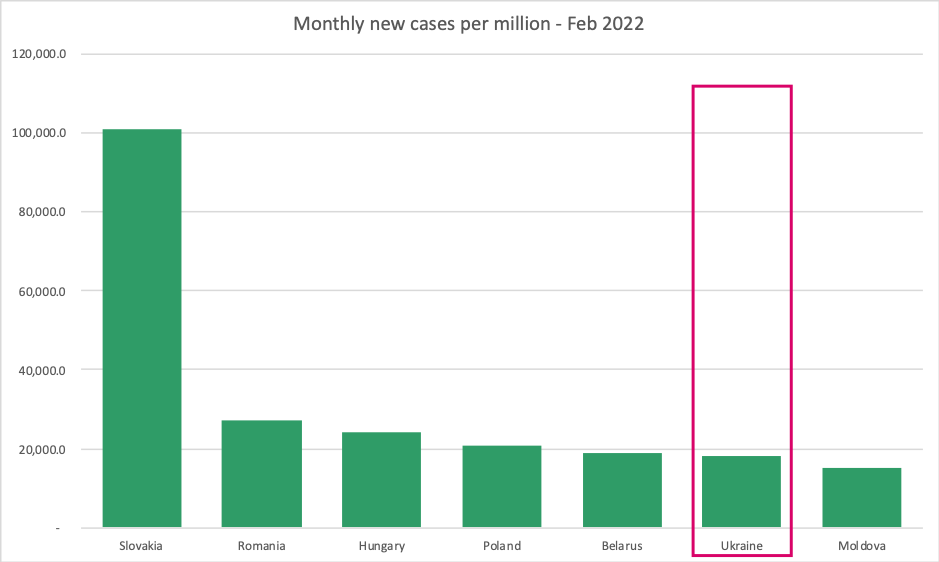UKRAINE AND ITS NEIGHBOURING COUNTRIES
A data snapshot on COVID-19 situation and public health challenges in Ukrain and neighbouring Countries – April 2022
Due to the conflict escalation in Ukraine, millions of people have left their homes and crossed into neighboring countries. The crisis is resulting in on-going destruction of civilian infrastructure (including hospitals), human causalities and the largest refugee crisis to occur in Europe since World War II. Millions have fled Ukraine for neighbouring westward countries such as Poland, Slovakia, Hungary, Romania and Moldova. Conditions created by conflict – mass movement of populations, crowded living conditions, lack of access to clean water – increase incidences of infectious diseases. Destruction of public health infrastructure and the interruption of health service supply chains, make them more difficult to treat.
These conditions, occurring in the midst of an ongoing pandemic, risk increasing the spread and severity of COVID-19 in addition to exasperating other health concerns. For this data snapshot, we take a deeper look at behavioural data on the COVID-19 situation in Ukraine and its neighbouring countries.

Population movement and displacement of refugees from Ukraine to neighbouring countries as of 15th March 2022 (WHO, 2022)
Interactive map of COVID-19 related data in Ukraine and its neighbouring countries
(all below figures are monthly and as of end of March 2022)
See below our data sources
VACCINATION RATE
Just prior to the conflict, the COVID-19 vaccination rate in Ukraine was among the lowest in East-Central Europe, with 36.2% of the eligible populations having received their first dose (Moldova with a 24.6% vaccination rate)
VACCINE Supply
Vaccine supply are relatively low for both Ukraine and Moldova. This may partially explain lower vaccination rates.

Caveat: vaccine supply and administration come from two different datasets and might not be perfectly in synch


VACCINE WILLINGNESS
In Ukraine COVID-19 vaccine willingness used to be low. This hesitancy was not new as illustrated by the fact that only 29% of the Ukrainian respondents considered vaccines as safe according to the Wellcome Global Monitor 2018.
However, COVID-19 vaccine willingness has since increased steadily and averaged just over 80% as of the end of February. There is also near gender parity in vaccine willingness rates for both women (81.9%) and men (80.1%).
epidemiological situation
While all countries in the East-Central European region are still coping with the Omicron variant, Slovakia is experiencing the greatest spike in new cases.
- WHO – Ukraine crisis. Public health situation analysis: refugee-hosting countries (March 2022)
- WHO – Provision of immunization services to refugees: guidance for host countries in the context of mass population movement from Ukraine (March 2022)
- CDAC Network – Ukraine: Resource portal for responders
- ACAPS – Moldova: Ukrainian refugees
- CARE – Rapid gender analysis: Ukrainian refugees in Poland
- Translators Without Borders – Ukraine language map
- Asylum Access – Ukraine emergency: resources for refugees
- Persons interested in exploring country-level data further can use the RCCE COVID-19 Country Dashboard
- Vaccine supply: UNICEF COVID-19 Vaccine Market Dashboard
- Vaccine administration and epidemiology: COVID-19 Dataset by Our World in Data
- Vaccine willingness: various sources detailed in the RCCE dashboard
- Stringency: Oxford Covid-19 Government Response Tracker
- COVID-19 risk: INFORM COVID-19 Risk Index
- Medical staff: WHO
Publication: 18th March 2022






